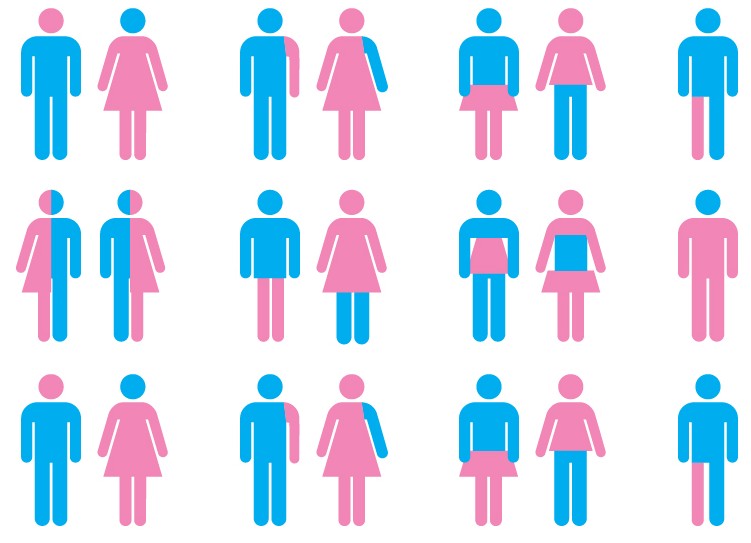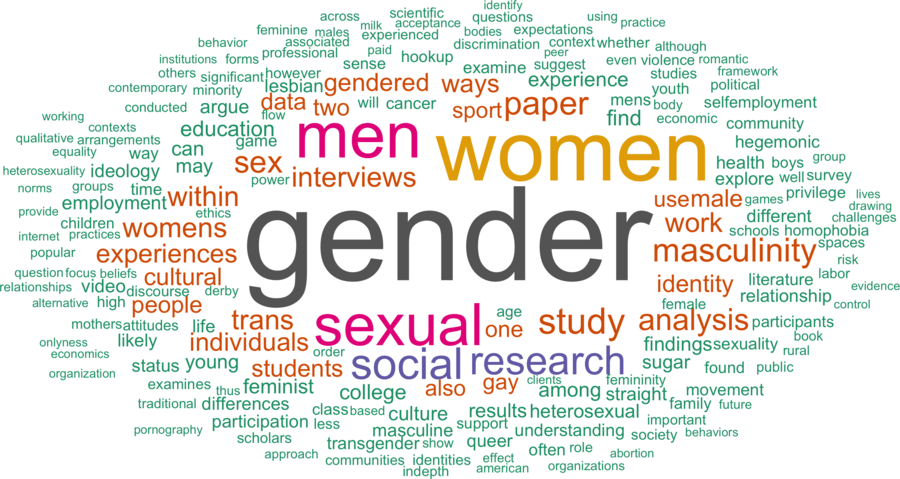Gender Based Violence (GBV) and Policy Response (Nepal)
Unit VI: Gender Based Violence (GBV) and Policy Response (Nepal)
• Sociological approach to understand violence against women
• GBV in Nepal
• Policy response
Required readings
Toffanin, Angela Maria (2012) "Research on violence against women: a sociological perspective,"
Interdisciplinary Journal of Family Studies, vol. 17(1), pp. 15-30.
OPM and CoM (2012) A Study on Gender-Based Violence Conducted in Selected Rural Districts of
Nepal, Executive Summary, Kathmandu: Office of the Prime Minister and Council of Ministers,
pp. VI-XXI.
Saathi, The Asia Foundation, and DFID (2010) Nepal: Preliminary Mapping of Gender Based Violence,
Kathmandu: Saathi, pp. 1-21.
Policy response
Nepal Law Commission (2009) Domestic Violence (Offence and Punishment) Act, 2066 (2009),
Kathmandu.
Nepal Law Commission (2007) Human Trafficking and Transportation (Control) Act, 2064
(2007), Kathmandu.
OPM and CoM (2012), Ending Gender Based Violence and Gender Empowerment: National Strategy
and Action Plan, 2012, Kathmandu: Office of the Prime Minister and Council of Ministers (text in
Nepali).
Additional reading
MoHP, New ERA, and ICF International Inc. (2012) Nepal Demographic and Health Survey 2011.
Kathmandu, Nepal: Ministry of Health and Population, New ERA, and ICF International,
Calverton, Maryland, Chapter 14.
### Unit VI: **Gender-Based Violence (GBV) and Policy Response (Nepal)**
This unit focuses on the sociological understanding of violence against women, the specific situation of GBV in Nepal, and the policy measures taken to address it. Understanding GBV through a sociological lens helps identify the structural and cultural factors that perpetuate such violence.
#### 1. **Sociological Approach to Understanding Violence Against Women**
- **Violence against women** is a sociological issue rooted in power dynamics, gender inequality, and patriarchal norms. Sociological perspectives help us see how social structures, cultural norms, and institutional practices condone or challenge GBV.
- **Angela Maria Toffanin** (2012) emphasizes that violence against women is often normalized through cultural and social practices that reinforce male dominance and female subordination. This violence manifests in various forms, including physical, sexual, psychological, and economic abuse, and it intersects with other social categories such as class, caste, ethnicity, and geography.
- A sociological approach looks at how violence is sustained not just at the interpersonal level but through larger societal forces, including media, legal systems, and economic policies, which may perpetuate gender inequalities.
#### 2. **GBV in Nepal**
- In Nepal, **Gender-Based Violence** is a pervasive issue, deeply rooted in traditional norms and values that favor male dominance. Women in Nepal face various forms of violence, such as domestic violence, sexual harassment, trafficking, and dowry-related violence.
- The **Office of the Prime Minister and Council of Ministers' (OPM and CoM) 2012 report** on GBV in rural districts highlights that GBV is often underreported, especially in rural areas, due to fear, shame, and lack of access to justice. It identifies factors such as poverty, lack of education, and social isolation as exacerbating the issue of GBV.
- **Saathi, The Asia Foundation, and DFID’s (2010) report** provides a preliminary mapping of GBV in Nepal, identifying critical gaps in the legal and social support systems for victims. It points out the importance of community-based interventions and the role of civil society in raising awareness and providing support services.
#### 3. **Policy Response**
- Nepal has implemented several legislative and policy frameworks aimed at curbing GBV:
- **The Domestic Violence (Offence and Punishment) Act, 2066 (2009)** provides legal recourse for victims of domestic violence and criminalizes acts of violence within households. This law aims to protect women and children from domestic abuse, although enforcement remains a challenge.
- **The Human Trafficking and Transportation (Control) Act, 2064 (2007)** addresses the growing issue of human trafficking, particularly women and children trafficked for labor and sexual exploitation. The law outlines severe penalties for traffickers but faces limitations in terms of implementation, especially in rural areas.
- The **National Strategy and Action Plan (2012)** outlines the government’s strategy for addressing GBV. It emphasizes gender empowerment and seeks to involve multiple stakeholders, including governmental bodies, civil society, and international organizations, to ensure a coordinated response to GBV.
- Despite these legislative measures, the challenge lies in effective enforcement, particularly in rural areas where traditional patriarchal attitudes are deeply entrenched. Awareness programs, capacity-building for law enforcement, and the establishment of support systems like shelters and hotlines for victims are crucial to making these policies effective.
#### **Additional Reading**
- The **Nepal Demographic and Health Survey 2011** (Chapter 14) provides statistical insights into the prevalence of GBV in Nepal. It highlights the high rates of domestic violence, sexual violence, and child marriage, underscoring the need for more robust policy interventions and community awareness programs.
---
### Key Takeaways:
- **Sociological Perspectives on GBV**: Gender-based violence is not an isolated act of individual pathology but a social issue shaped by broader cultural, structural, and institutional forces. Understanding these forces is key to addressing GBV effectively.
- **GBV in Nepal**: The problem of GBV in Nepal is widespread, with rural women being particularly vulnerable due to traditional gender norms, poverty, and lack of education. Reports and studies underscore the need for comprehensive interventions.
- **Policy Response**: Nepal has taken legislative steps to address GBV, but gaps in enforcement, cultural resistance, and lack of resources remain major hurdles. The success of these laws depends on improving legal literacy, access to justice, and support for survivors.
This unit helps students critically analyze the social dimensions of GBV and evaluate the effectiveness of policy responses, particularly in the Nepalese context.
Here are 10 potential exam questions covering key topics from the **Sociology of Gender** course. These questions address important conceptual, theoretical, and practical issues related to gender and feminist theory, particularly in the context of Nepal.
### 1. **Social Construction of Gender**
- How do sociologists differentiate between sex and gender, and how is gender socially constructed in everyday life?
- Discuss Judith Lorber’s concept of “doing gender” and how it relates to gender as a routine accomplishment in social interactions.
- Explain the gender division of labor and how it reflects the social construction of sex roles in society.
### 2. **Feminist Theories**
- Critically analyze Simone de Beauvoir’s contribution to **Liberal Feminism** with reference to her work *The Second Sex*. How does she explain women’s subordination through the notion of "the other"?
- Examine Maria Mies’ **Socialist Feminism** and her argument on the social origins of the sexual division of labor. How does this perspective challenge capitalist patriarchy?
- Discuss the central themes of **Third-wave Feminism** as articulated by Chandra Talpade Mohanty in “Under Western Eyes Revisited.” How does Mohanty critique Western feminist approaches to global struggles?
- How does **Radical Feminism** explain women’s subordination through the lens of sexual politics? Refer to Kate Millett’s *Sexual Politics* in your response.
### 3. **Patriarchy and Beyond**
- Compare and contrast the different feminist interpretations of patriarchy. How do Marxist, Radical, and Socialist feminists conceptualize patriarchy differently?
- Drawing on Deniz Kandiyoti’s concept of "bargaining with patriarchy," explain how women negotiate their roles and rights within patriarchal structures in everyday life, especially in the context of household dynamics.
### 4. **Sociological Debate on Power and Empowerment**
- How do Pierre Bourdieu, Michel Foucault, and Jean Baudrillard conceptualize power? Discuss the relevance of their theories to understanding gendered power dynamics.
- Critically assess feminist interpretations of power, focusing on the notion of empowerment. How does Srilatha Batliwala’s critique of empowerment challenge traditional development frameworks?
### 5. **Gender-Based Violence and Policy Response (Nepal)**
- Discuss the sociological approach to understanding violence against women, focusing on structural and cultural explanations. What are the main drivers of GBV in Nepal, according to recent studies?
- Evaluate the effectiveness of Nepal’s policy responses to gender-based violence, such as the Domestic Violence Act (2009) and the Human Trafficking Act (2007). What challenges remain in implementing these policies at the local level?
These questions should help you engage critically with the course content and prepare for your upcoming Sociology of Gender examination.
Here are 10 comprehensive questions based on the **Sociology of Gender** course content. These questions are designed to help you prepare for your Master's examination:
### 1. **Social Construction of Gender**
- How is gender socially constructed, and in what ways does it differ from biological sex? Draw on the work of William Little, Ron McGivern, and Judith Lorber in your response.
### 2. **Gender as Routine Accomplishment**
- Critically analyze West and Zimmerman’s concept of “doing gender.” How does this theory explain the role of everyday interactions in reinforcing gender roles?
### 3. **Gender Division of Labour**
- Explain the historical and sociological reasons behind the gender division of labor. How do sex roles contribute to this division, and what are its implications for gender inequality?
### 4. **Liberal and Socialist Feminism**
- Compare and contrast **Liberal Feminism** (as represented by Simone de Beauvoir) and **Socialist Feminism** (as represented by Maria Mies). How do these perspectives explain women’s subordination and their paths to liberation?
### 5. **Third-Wave and Radical Feminism**
- How does **Third-Wave Feminism**, as explained by Chandra Talpade Mohanty, differ from earlier waves of feminism? Additionally, discuss **Radical Feminism** with reference to Kate Millett’s theory of sexual politics.
### 6. **Capitalist Patriarchy**
- Discuss Zillah Eisenstein’s theory of **capitalist patriarchy**. How does the intersection of capitalism and patriarchy affect gender relations in both the workplace and the home?
### 7. **Bargaining with Patriarchy**
- Explain Deniz Kandiyoti’s concept of **bargaining with patriarchy**. How do women navigate and negotiate their rights within patriarchal structures, especially in developing countries like Nepal?
### 8. **Power and Empowerment**
- Compare the sociological theories of power as conceptualized by Pierre Bourdieu, Michel Foucault, and Jean Baudrillard. How do these theories apply to gender relations and feminist debates on power and empowerment?
### 9. **Feminist Methodology**
- What are the key critiques feminist scholars have of positivism, and how do these critiques inform the development of **feminist methodology**? Discuss the importance of reflexivity and social change in feminist research.
### 10. **Gender-Based Violence and Policy Response in Nepal**
- Provide an analysis of the sociological approach to understanding **gender-based violence (GBV)** in Nepal. How effective are Nepal’s legal and policy frameworks, such as the **Domestic Violence (Offence and Punishment) Act, 2009**, in addressing GBV? What challenges remain in enforcement?
These questions encompass major themes from the course, ensuring a broad coverage of topics for your exam preparation.








